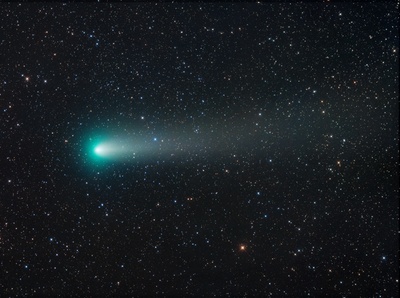Green comet makes closest approach to earth
The close approach coincides with a New Moon, providing a velvety-dark backdrop for the passage of the comet. The best time to look is during the dark hours before sunrise when the constellation Auriga is high in the eastern sky. If you have a GOTO telescope, use these orbital elements to point your optics. Detailed sky maps can help, too.
Shining just below the limit of naked-eye visibility, the comet will remain easy to photograph for the rest of September. If you can only mark one date on your calendar, however, make it Sept. 15th. On that night, 21P will cross directly through the middle of the star cluster M35 in the constellation Gemini. Astronomer Bob King writing for Sky and Telescope notes that "the binocular view should be unique with the rich cluster appearing to sprout a tail!"
21P/Giacobini-Zinner is the parent of the annual Draconid meteor shower, a bursty display that typically peaks on Oct. 8th. Will the shower will be extra-good this year? Draconid outbursts do tend to occur in years near the comet's close approach to the sun. However, leading forecasters do not expect an outburst this year despite the comet's flyby. In case they are mistaken, many eyes next month will be on the shower's radiant in the constellation Draco.
